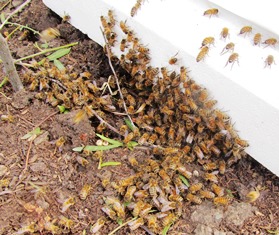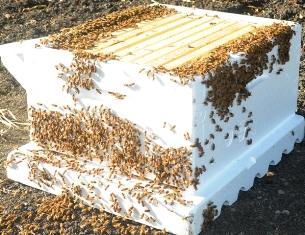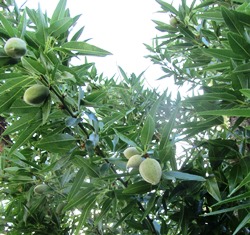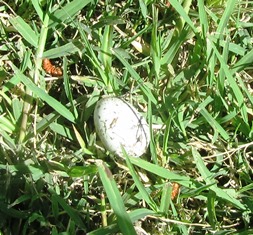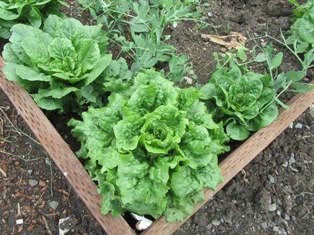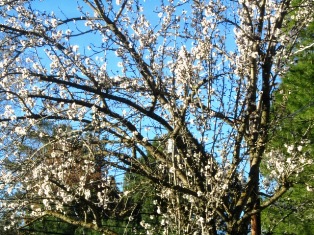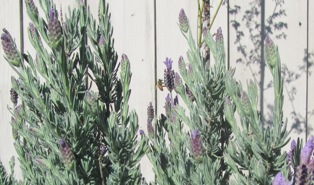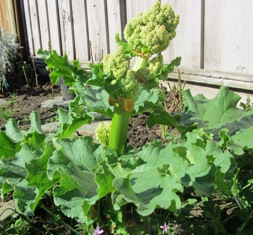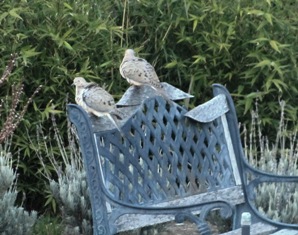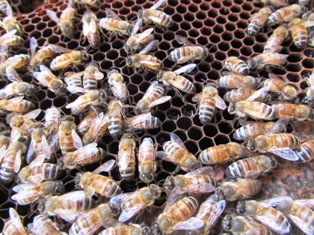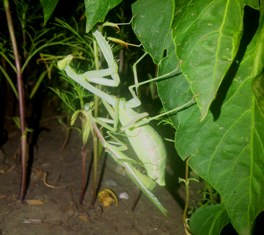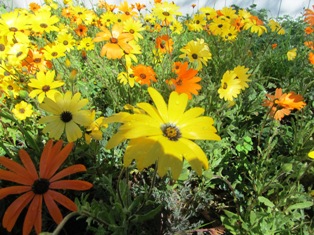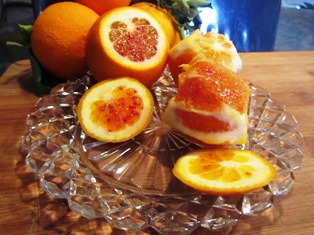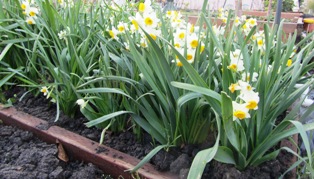Archive for the 'Uncategorized' Category
Beekeepers File Suit to Ban Two Pesticides
Neonicotinoid pesticides pose a high risk to honeybees, a belief that has beekeepers aligned with environmentalists and scientists and is the basis of a lawsuit filed against the Environmental Protection Agency.
According to the EPA’s website, several European countries have suspended or banned the use of neonicotinoids (commonly referred to as neo-nics) for causing acute poisoning of honeybees. However, the EPA denied the request posed in a legal petition by environmental organizations and beekeepers in 2012 here in America to ban clothianidin, an insecticide classified as a neonicotinoid.
Recently, the Center for Food Safety, on behalf of commercial beekeepers and environmental organizations, filed suit against the EPA seeking to force the EPA to suspend the use of the insecticides clothianidin and thiamethoxam. Both insecticides are are neonicotinoids, a class of chemicals that harm the nervous system of bees.
Healthy bees are vital for the pollination of California’s almond crop (the state produces roughly 80 percent of the world’s almonds) but also bees are necessary for the pollination of roughly 30 percent of other crops in the United States.
When the almond orchards of California need honeybees for pollination, they turn to the commercial beekeepers, many in the Midwest. It is estimated that more than half of the nation’s honeybees are shipped in their hives here for the almond blooming season–possibly the nation’s largest pollination event. This year, there was a shortage of bees.
With higher than usual die-offs of bees and colony collapse disorder (in which, bees disappear or die) on the rise, beekeepers and scientists have long suspected that the chemicals in certain pesticides play a role. Exposure to chemical residue in nectar, pollen, and dust (from treated seeds) not only hurt the honeybees, but some say also affect other beneficial insects.
The EPA states on its Website <http://www.epa.gov/opp00001/about/factsheets/protectbees_fs.html> that it is working toward pollinator protection on several fronts, including through regulatory, voluntary, and research programs.
Although the EPA is re-evaluating the use of neo-nics, the agency’s re-evaluation process will not be completed anytime soon–it can take years. That could be bad news for the nation’s beekeepers and California’s almond growers.
Growing Wildflowers
You might call it serendipitous. Last weekend while Carlos and I replaced windows along the front of the house, my son went hiking in Marin with a cousin. While we trounced on the bed of wildflowers planted under the windows, my son was simultaneously picking wildflowers on his hike.
He brought home a fistful of lupines, poppies, California buttercups, heather, and wild mustard blooms.
It’s not a secret that Spring clothes Nature in her most majestic colors and patterns. I can just imagine the sight of those flowers filling a hillside. The moment I walk into my kitchen, my gaze is drawn to the intensity of lavender, blue, yellow, and orange blossoms adorning the my window.
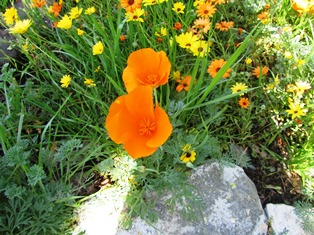
The brilliant orange color of the California poppy is most dazzling when planted with purple lupines
For me, the sight of wildflowers growing on the sides of hills and mountains in Northern California seems to lighten my spirit and energize me. That’s a good reason, I figure, to grow them in beds at the entrance of our home. Their perkiness and bright colors welcome one and all.
When wildflowers are indigenous or have adapted to their habitats, they are often resistant to diseases and local pests. If you gather seeds from the wild, plant them soon after you harvest them. If they dry out, they enter dormancy (sleep) and may not not emerge from their dormant state.
Give wildflower seed the right soil–some will do well in rock gardens, but others want humus-rich soil. Take note of the soil where you found them growing in the wild. Woodland wildflowers will need more water than a desert plant, so take note of water needs and also the amount of sunlight exposure the plant might require.
Grow perennial wildflowers from cuttings or clump divisions.
If you buy wildflowers in containers or as bare-root plants, pay attention to the quality of the plant’s leaves, stems, and blooms. Avoid purchasing a plant that has bruised or broken stems, wilted or burnt leaves, or pot-bound.
If the plant takes an unrealistically long time to regenerate or propagate, you probably have purchased a plant that has been collected in the wild, not grown in a nursery. Give it the right conditions in which to grow and nurture it along with patience.
Morning Meandering Yields Discoveries
Mornings are my favorite time of the day. My mind is freshest after a good night of sleep, and my observation skills are best in the early hours.
With a cup of hot coffee in hand, I meander around the farmette, spying spider’s webs, still moist with dew; an outbreak of aphids on the peach tree; the first of the Mr. Lincoln dinner-plate-size roses in bloom; a pair of mourning doves poised for flight at my approach; and sunflower seedlings poking up at last in the patch dirt where we planted them two weeks ago, just as the rains were ending.
This morning, I am surprised by the amazing number of almonds that our tree has produced. It won’t be long before the squirrels discover them, too. So I’m faced with a decision of whether to share the bounty with the squirrels or place netting over the tree.
Near the front door, a bird’s egg lies in the grass, cracked on one side. From the white color and brown speckling, I figure it probably belongs to a house wren. Wrens like to built nests in cavities or flowerpots and even mailboxes. Our resident wren constructed a small nest in a hole of an exterior roof beam. This egg was likely one of five or six that the house wren typically lays.
Grow Seeds, Grow
I loved that command, “Grow seeds, grow,” when I first read it in Arnold Lobel’s book about Frog and Toad, two best friends. Now that I’ve planted seed flats with heirloom seed, I water and watch it daily for signs of life. And that command to the seeds keeps popping into my mind.
What is growing and rapidly is the purple Chinese wisteria that we planted in the area we’ve designated as a sitting area in the garden. It already has a concrete slab large enough for a car. We plan to tile that concrete with a pretty backyard patio tile and build a trellis around it to support the wisteria.
Also growing are the baby apricots that have formed as the blooms leave the tree in the wind or by dropping to the ground. The peaches are swelling in size as are the almonds on the tree that we cut so severely that my neighbor thought it might not recover. It has.
The garden will rapidly take off with another rain and the forecasters say we have chance for showers on Tuesday, my birthday, and the beginning of Passover. Surely the timing will be auspicious for my garden.
Spring’s Ever-Evolving Palette of Colors
Rising before the sun does ensures that I have quiet time to stroll around the fecund farmette. It’s my time to contemplate my writing project before tackling the work and also to feel gratitude for the life I have here in rural Concord, living close to nature.
As the sun breaks over the horizon, splaying out across orchard, I walk to each fruit tree and study the the way the sunlight illuminates the swollen buds that look like little jewels. Many have already burst open along the branches and some branches have even leafed out.
Along the back of our property, tree canopies of pink and white signal that the apricot, plum, apple, almond, and peaches already have broken dormancy. The hachiya persimmons and the Tilton apricots that we planted on the eastern side of the property, however, are still “sleeping.” We moved the Lady Banks climbing roses over there, too, to make way for more renovation work near the house.
The French perfume and Spanish lavenders add a deep purple hue to the ever-evolving palette of spring color. Noticing a honeybee on the lavender, I thank the Creator for its presence. I much prefer the bees doing the pollinating than having to do it by hand as a friend recently told me she had to do with her fruit trees in Santa Cruz County.
Seemingly overnight, the rhubarb sent upward a giant spike with what appears to be a bloom. This hasn’t happened before to these plants, so I’ll need to cut that bloom in order to focus the plant’s energy into forming the cherry-colored stalks. The leaves and bloom would not be edible–they’re poisonous. The stalks, however, are delicious in pies.
As the sun continues to climb, I head for the house and a pot of hot coffee. Time to go to work. I’ll take a break later and stroll around outdoors to discover what I might not have noticed on my earlier walk.
Sweet Ending to a Sour Spat
In virtually every relationship at some point, spats happen. Here on the farmette, my husband and I agree most of the time, whether the issue is about plants, animals, or us. But when we don’t agree, buttons get pushed and, sadly, anger seems to rise with the decibel levels of our voices.
After the argument is over, we both feel the tension released but the wounding remains in our hearts. We try to find our way back to the other. Sometimes it requires building bridges. I guess that has been the process of marital relationships since pair-bonding began.
Recently, my spouse did two wonderful things following our “disagreement.” He apologized (I did, too)) and he then took off in his pickup, returning home home with an angel statue that now stands in my garden to remind us to be gentle and kind to each other. He also brought sweets and the symbolism didn’t need to be explained.
Quarreling is awful. He hates it. I hate it. But we work so very hard here on this farmette, trying to create shelter (still) while we develop the land. It’s not an easy business. Being too tired to think straight as a reason why you lashed out at the person who should be the most important individual in your life is a terrible excuse.
It’s a better idea to own up to your part in the drama, do what you can to make things right, forgive, and forget. Express tenderness when making up; that way, the ending of hostilities becomes all the sweeter.
A Whole Lot of Coupling Going On
Lately, the way the birds, insects, and wild creatures are pairing up, you’d think we were on Noah’s Ark instead of the Henny Penny Farmette.
I’ve never seen such bird and bee traffic as in the last few days. This morning, I put on the bee suit and joined my neighbor on a tour of inspection to see if the bees survived the cold snap we had a week or so ago. We had snow on Mount Diablo and a hard frost elsewhere. But the bees are fine, and there are lots of babies.
Today, the yellow finches are congregating around the Nyjer feeder and singing their little hearts out. There’s a woodpecker in the neighborhood (maybe two). I haven’t seen it/them but there’s a whole lot of tap-tap-tapping in the nearby oak trees.
I often see a flash of blue as I work to move and amend the soil on our property. Last year about this time, pair of Western blue birds were scouting locations for a nest. They are back and I hope they stick around.
The plaintive coo-coo-coo of the mourning doves has become a chorus of late. At first, I noticed a pair in the back yard and now there are several pairs. They mate for life. So we’ve put out birdseed and I fully expect to see a nest or two being constructed in the next few weeks.
Birds and bees are either producing young or making preparations to produce offspring. But the praying mantises? Who knew?
So what I’m taking from all this pairing up is that Mother Nature expects warm days ahead. The wild creatures made it through the winter. No one has to tell them what to do now that spring is only weeks away. Like I said, it looks like Noah’s Ark around here.
February Color on the Farmette
It’s difficult to find color in the dead of winter. It’s the last week of February and around the farmette it’s beginning to look like spring. Mixed in with the drab brown and gray and green are dazzling splashes of orange and yellow.
On Sunday, my husband and I helped out a neighbor with the pruning of her fruit and citrus trees. My husband will also be removing her aged trellis, cutting back the Japanese wisteria and reducing the size of what looks to be a 20-year-old grape vine.
She had two orange trees both loaded with oranges, so there was harvesting to be done before we could even start pruning back the tree. One was a Valencia orange, known as the juice orange. I cut into several of them this morning and found them streaked with red. What came to mind was that perhaps the busy little honeybees had cross pollinated her Valencia with a Blood Orange. I’m growing several on the farmette.
Citrus trees need little pruning. It’s easy to thin the shoots and branches, rather than shortening the tree. You can also revitalize an old tree that is unproductive (my neighbor’s tree was old but still producing a lot of fruit) by pruning a little more severely but such a severe pruning can stop fruiting for one to two years.
Growers say to feed citrus four times a year; I feed mine once a month with a deep watering. Soils that don’t have good organic matter and nitrogen will benefit from compost, blood meal, cottonseed meal, and well rotted manure on the soil surface out to the drip line. If your citrus isn’t performing for you, try scratching around the surface of the soil under the tree. This stresses the surface roots. Citrus need good drainage. Water slowly and deeply.
We’ve been lucky to have a stretch of warm, sunny days here in Northern California at the end of February. The fruit and nut trees have burst into bloom. Around the farmette, there are pink and white buds opening on the apple, apricot, peach, and almond trees.
The field in the back is knee-high with wild mustard and its blooms are bright yellow on green stalks. The yellow and orange daffodils and purple hyacinths create a floral motif on the drab winter cloak of Mother Nature . . . at least here on the Henny Penny Farmette. Just another reason why I love living here.
Daffodils
William Wordsworth wrote, “A host of golden daffodils; beside the lake, beneath the trees, Fluttering and dancing in the breeze.”
These fragrant flowers evoke for me memories of growing up in rural Missouri where every spring, bulbs, in repetition of an ancient cycle, pushed upward through the earth with swordlike precision and flowered.
I’ve plucked some of these beauties for my desk. If I must work indoors, then I will enjoy their lovely yellow blooms where they rest in a vase upon my desk, which otherwise is piled high with books. I work. And every once in a while, I capture a whiff of their sweet scent permeating the room.
The following is a list of of several types of daffodils:
Trumpet daffodils (these include the King Alfred, Unsurpassable, and Beersheba (the latter is a white whereas the former has yellow blooms).
Large-cupped daffodils (Carlton, Fortune, Gertie Millar, and Tunis).
Jonquilla Hybrids (Trevithian)
Triandrus Hybrids (Thalia)
Double daffodils (Mary Copeland, White Lion, Twink)
Small-cupped daffodils (April Showers, Mrs. Nette O’Melveny)
Cyclalmineus Hybrids (February Gold)
Poeticus narcissus (Actaea, white flowers, yellow cups, edged in red)
Plant them in the fall in a location where they won’t be moved as they will increase in number each year. There are a lot of reasons to like daffodils: they give your garden color in the spring, the tolerate heat and cold, they are unappetizing to golphers, and they soon naturalize in the landscape.
The Cornell Baking Soda Formula for Roses
While perusing the December 2012 edition of American Rose, the Magazine of the American Rose Society, I discovered an article about the diseases of roses and some of the ways several rose experts would deal with them.
In a discussion of treating rust, downey mildew, and blackspot, the rose experts concurred that prevention is the first line of defense against these diseases. Once you find evidence of them in your garden, you must remove and destroy infected leaves and stems, including the leaves that have fallen to the ground.
Another important step, among others, was to spray an oil and bicarbonate of soda recipe referred to as the Cornell Baking Soda Formula.
The ingredients are simple and can be found in many homes: 1 Tablespoon each of baking soda, horticultural or summer oil, and castille soap. Mix these into 1 gallon of water, shake, and spray.
For advice on growing roses that are best suited to your area, check with your local nurseries and consider joining your the American rose society or local garden club. Also, think about choosing varieties of roses to grow in your area that are resistant to these diseases.
 Facebook
Facebook Goodreads
Goodreads LinkedIn
LinkedIn Meera Lester
Meera Lester Twitter
Twitter





